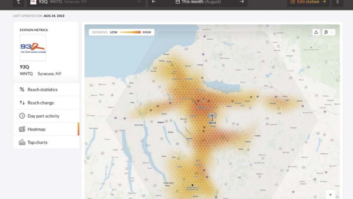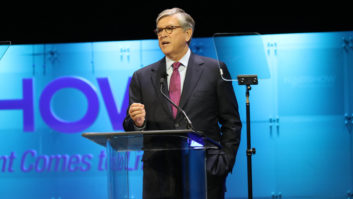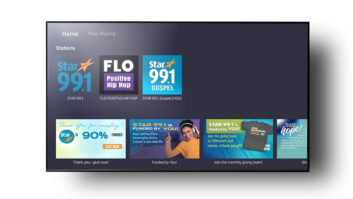It’s certainly no secret that radio broadcasting has been moving away from its century-old analog over-the-air delivery platform.
One large media company, the Sinclair Broadcast Group, is now field-testing a delivery modality that may prove to be the medium’s next step into 21st century broadcast ecosystems.
The ATSC 3.0 or “NextGen TV” IP-based digital television transmission system is being rolled out rapidly across the country, with a projected availability in 82 percent of U.S. markets by year’s end; and the technology is being beta-tested at a Sinclair-owned ATSC 3.0 Class A television property in the Washington, D.C. market, WIAV(CD).
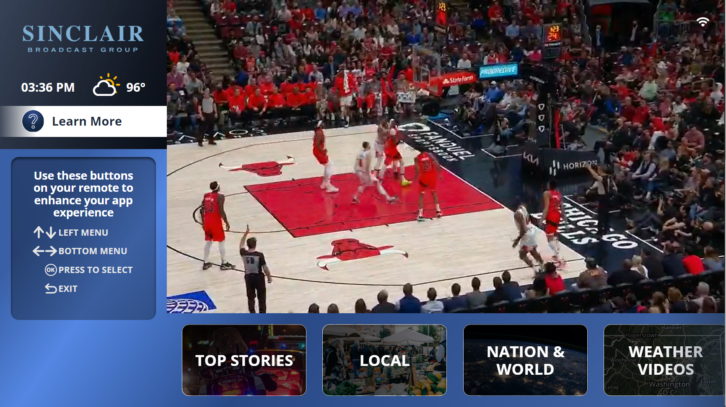
But for Radio World readers, the story of interest here is that, in addition to multiple streams of NextGen TV content, the station is providing a “multiplex” of audio services that includes Hubbard Broadcasting’s all-news operation in the nation’s capital, WTOP(FM).
An open door?
Mark Aitken, Sinclair’s senior vice president of advanced technology and president of One Media 3.0, says the initiative is part of a larger effort exploring the full potential of the hybrid over-the-air/internet digital television transmission standard in terms of new business models and opportunities for broadcasters.
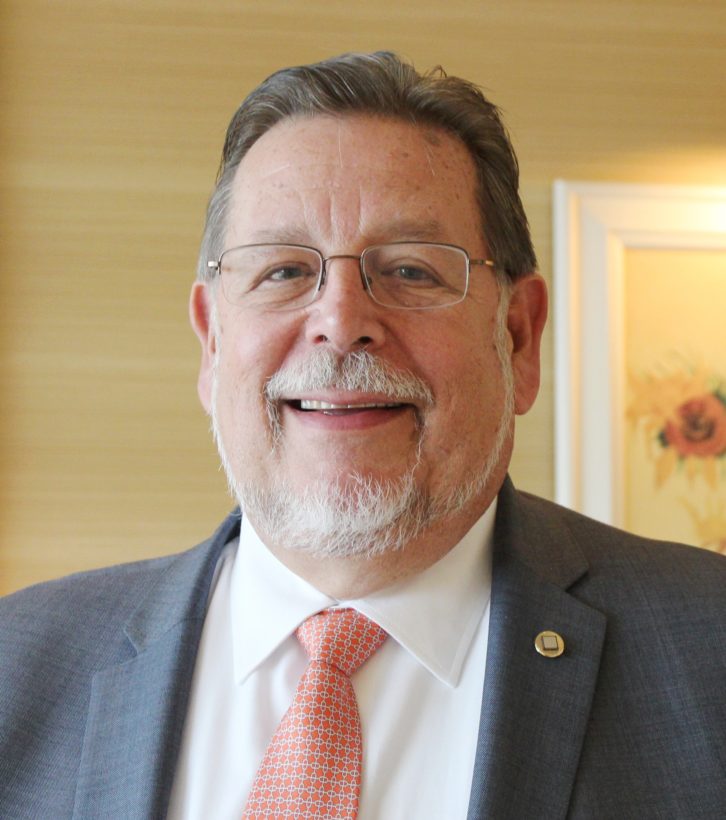
“We’ve been building out the Baltimore/Washington marketplace with some ATSC 3 showcase applications for automotive,” said Aitken. “ATSC 3 opens the door for providing additional content beyond television services.”
The package of a dozen or so audio services, including WTOP, is available free to owners of ATSC 3.0 television receivers. This is enabled through an app that’s easily executed on the sets themselves as a function of the NextGen TV interactive layer.
“With an ATSC 3 television set, the user launches the app that’s announced on the channel,” said Aitken. “The app lists the available services. We launched the audio services inside of STIRR XT (Sinclair’s brand for NextGen TV alternative services).

“When you turn to the channel there’s a very recognizable icon that looks like a remote control that questions the viewer about launching the app. Using the remote control the user can navigate around various services; weather, news, traffic, headlines, etc. As well, there is STIRR XT, and inside of that are music services which include country, rock, classical and other services. The WTOP audio is just one piece of this [although] it’s at the top of the audio service list as we wanted to bring local radio into the environment.”
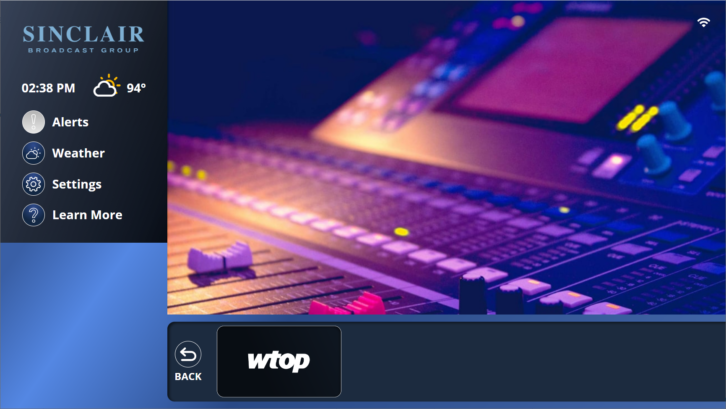
Aitken added that the “radio” app is not specific to one make of NextGen TV but is designed to install on any of the LG, Samsung and Sony sets that offer ATSC 3.0 capability.
The music channels accompanying WTOP are by a third-party Stingray, which provides customized audio services.
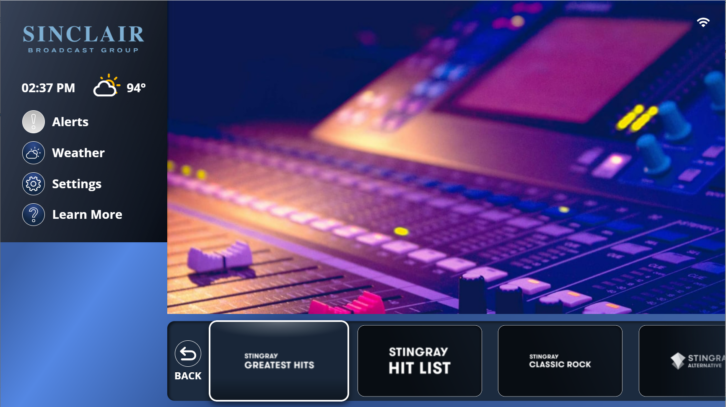
Alternative to satellite?
Aitken noted that this NextGen TV audio delivery service is thought of as a possible alternative to that provided by satellite broadcaster SiriusXM, but with the addition of existing local radio services that’s already familiar with listeners.
“If we can include local radio in different markets as part of that whole experience, we believe that there’s a compelling consumer proposition to offer that as a paid service. You might get 100 channels that are uniformly the same and not much different than SiriusXM — for example ’70s, ’80s, ’90s channels, an Elvis channel, a classical channel, all of those — but part of that mix should be local radio.”
Aitken said the inclusion of local radio programming streams and other audio with television makes sense, especially with the plethora of consumer devices for consuming content that exist today.
“When content comes in on different platforms … this is a barrier to many consumers — having to switch from one platform to another,” he said.
“Part of the equation is getting the user interface right. People don’t like having to push buttons other than ‘channel up/channel down’ and ‘volume up/volume down’ in between services. NextGen TV can be the common platform that brings different services together for a great consumer experience.”
Aitken envisions using the enhanced capacity for delivering data that’s part of the ATSC 3.0 standard for delivery of perhaps 50 to 100 or more audio services, without affecting the capability for simultaneously providing very high-quality television.
“[With ATSC 3.0] we’re doing HD video with 3 mbps typically, if one of the channels is operating with HDR (high dynamic range), we might use more bits. However, the bits used [for AC-4 audio] right now are inconsequential. You could do a voice-only service using xHE-AAC compression with only 6 or 7 kbps. You can do stereo music services starting at 12 kbps. So, you’re not talking about using up a whole lot of capacity.
“What that means on the inverse side is that you can provide a very robust tier — a very robust PLP (physical layer pipe) inside ATSC 3 with a very robust modulation and coding formulation — and provide excellent indoor and mobile service without having to sacrifice a lot of spectrum.”
(The original ATSC 1.0 digital television compression scheme caps data rates at about 19 mbps within a 6 MHz television channel, while the much more efficient ATSC 3.0 coding methodology can provide upwards of 25 mbps within the same 6 MHz of broadcast spectrum at similar SNR.)
When asked about promotion of the ancillary audio service available on Sinclair’s D.C. TV station, Aitken said that there had been none.
“There’s been no advance publicity; people discover it through the process of discovering ATSC 3. The response to [the audio service] has been positive, based on data analytics collected on those devices.”
[Sign Up for Radio World’s SmartBrief Newsletter]
Useful feedback
Such data analytics leads to another big plus that’s associated with ATSC 3.0, whether the programming being consumed is video or audio. The hybrid OTA/internet connectivity of the NextGen TVs provides a return channel from consumers that can provide content producers or distributors with “instant” demographics on how their content is going over with consumers.
“In the ATSC world where the smart TV is connected to the internet, we can get real data about consumer actions,” said Aitken. “This is real data, not data extrapolated through Nielsen.”
Aitken said that at this point in the trial his company is not paying a lot of attention to such feedback for actionable activity, but it could be valuable as the concept of radio-via-ATSC 3.0 takes off.
He mentioned that the potential interactivity between content originators and consumers afforded by NextGen TV is starting to get some creative juices flowing within the radio community.
“Some of the radio guys have ideas about things that they’d like to do, but can’t do in radio today, like promotions for concerts,” said Aitken. He said Sinclair has been approached by some radio groups for more information about “3.0 radio.”
Sinclair is not currently in the radio broadcasting business, but has owned properties in the Seattle market in the past, and previously experimented with airing radio audio there in connection with its ATSC 3.0 TV broadcasts. Asked if the company is considering re-entering radio, Aitken replied that there had been some discussion, but nothing has been decided yet. The on-going D.C. market “proof of concept” trial is being conducted just “to show that there are automotive and audio business opportunities.”
“As we’re not in the radio business [now], we’re probably looking at partnering where we sell the bits and someone else provides the audio service.”
He observed that while the audio services are now provided free, this would eventually change in today’s world of “bits for bucks,” especially when 3.0 capabilities are extended to automobiles.
“In the automotive environment, we think that such services should be for pay,” said Aitken. “We think that there are opportunities, or certainly value, in providing competition to SiriusXM, [which comes] with an interactivity that’s not available on any other platform.”
[Related: “Sinclair, Hyundai Mobis Ink Deal for ATSC 3.0 Automotive Services”]
